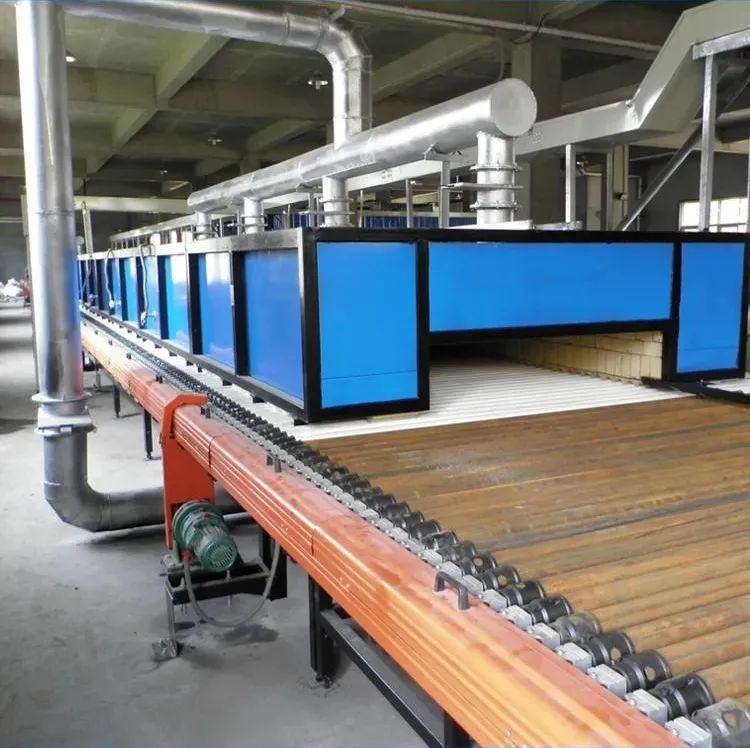The advantages of the roller kiln are: the temperature in the kiln is uniform, the heating can be carried out up and down the roller at the same time, the sintering is accelerated and the blank is heated more evenly, the refractory materials such as kiln cars and saggers can be omitted, the firing cycle of the product is short, and the fuel The consumption is low, but a backing plate is required when calcining large pieces such as sanitary ceramics.
The main disadvantage of roller kiln is that the kiln width and load-bearing are limited by the high temperature performance of the roller, the product is difficult to handle after being blocked in the kiln, and the edge wiping problem has not been completely solved.
The top of the roller kiln adopts a lightweight refractory flat ceiling structure; the kiln wall adopts a lightweight brick refractory fiber composite structure.
For the high temperature zone of the high temperature roller kiln, alumina hollow ball bricks can be used; light mullite bricks can be used in the sub-high temperature zone; light high alumina bricks can be used for the lower temperature (<1150℃).
Since the widening of the kiln body is limited by the length of the rollers, it is necessary to use high-quality insulating refractory materials to reduce the heat dissipation loss of the kiln wall as much as possible.
The roller kiln uses the combination kiln furniture of "bottom plate + pillar + shed plate" to transport the ceramic body. Usually, high-quality silicon carbide composite kiln furniture is used. That is, the combination of high-quality silicon carbide base plate + high-quality silicon carbide shed plate.
The main advantages of high-quality silicon carbide kiln furniture are good high temperature resistance and creep resistance, strong thermal shock resistance, high thermal conductivity, and long service life. However, if the firing temperature is low, in order to reduce the one-time investment, there are also the use of ordinary silicon carbide base plate + Dong Qingshi shed plate combination kiln furniture.
Roller bar is the key refractory material of roller kiln. Low temperature belts can use heat-resistant steel rolls. When calcining light parts, the high temperature belt should use aluminum silicon rollers, and when sintering heavy parts or the temperature is higher than 1350℃, silicon carbide rollers should be used. Improper selection of rollers will cause problems such as glaze sticking, deformation and bursting, resulting in poor movement of the blank or even interruption of production.



